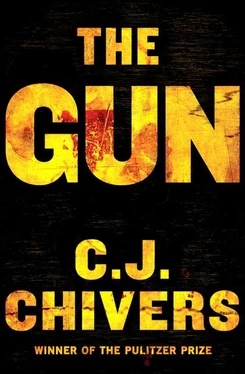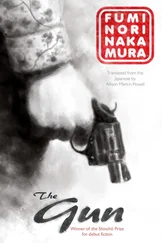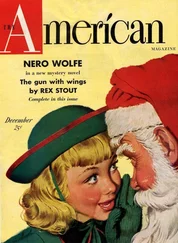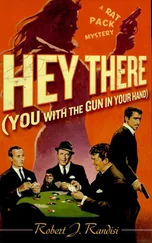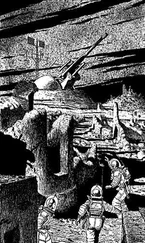Marshall’s findings were a drop in a cascade. In letters home and interviews with reporters in the war zone, soldiers and Marines told of weapons failing while troops were under enemy fire. One Marine lance corporal noted that “every private through sergeant that uses the rifle will tell you that it will jam about once every 2 magazines if it is on full-automatic and about once every 3 or 4 magazines on semi-automatic.” How this translated into combat was captured in the last minutes in the life of Lance Corporal David C. Borey, a Marine from Massachusetts assigned to Bravo Company, First Battalion, First Marine Regiment. A fellow Marine mailed a letter home describing the skirmish, which erupted after his unit had been airlifted outside Da Nang and was caught in the open crossing a rice paddy the next day. “This is how it happened,” he wrote:
Like you said, Dad, we are all complaining about the M-16. When it works you can’t beat it but it jams so goddamn easy. The only cover we had was a 5″ dike to hide behind. There was a steady flow of lead going back and forth and we were jaming [sic] left and right. And when they jam the only thing you can do is poke a cleaning rod down the bore and punch out the empty shell. Borey had the only cleaning rod in our group and he was running up and down the line punching out the bores. I knew he was going to get it and I think he did too. A man needed the cleaning rod and Dave jumped up and started running towards him. As soon as he got up he was hit in the foot. He was about 10 feet in front of me and he called to me and said—Hey Bert I’m hit. He couldn’t stay where he was—bullets were hitting the dirt all around him. He had to get back to the dike. I told him to get up and run and I’d shoot grazing fire into the tree line where the VC were. I got three magazines and fired 60 rounds to cover him but as he was running a goddamn VC bullet hit in the back. 68
The wall of silence had broken. One incident after another eroded public confidence. Senator Peter H. Dominick, a Republican from Colorado, visited Vietnam in May 1967 at roughly the same time that Lance Corporal Borey was shot. Dominick inquired about the M-16. He was told it was a good weapon and was invited to test fire a sample rifle himself. Someone produced an M-16 and handed it to the senator, who tried to fire it. It jammed. 69In June, members of Ichord’s panel held their own test fire with an M-16 provided by Colt’s. If any one M-16 might have been expected to perform flawlessly, this should have been it: the test rifle a manufacturer facing congressional investigation presented as a sample to Congress. The subcommittee’s rifle jammed several times. No one needed to be told what this might mean in combat. But another GI crystallized for the congressmen a particular species of nightmare:
The other night we got a radio message from one of our night ambushes…. The last words they said were, “out of hand grenades, all weapons jammed.” The next morning when they got to them, their hands were all skinned up and cut and their stocks on their rifles were all broken from using them as clubs.
As the battlefield accounts piled up, the M-16’s reputation sank so low that even troops waiting to ship to Vietnam worried about carrying it. “I was horrified at the stories of whole units being pushed back because of the inability of the M-16 to sustain a heavy rate of automatic fire without a malfunction,” wrote a navy lieutenant undergoing training in California. “It is terrifying and the stories and the opinions of the Marines regarding it have been ruthlessly suppressed…. I witnessed on the firing range malfunction after malfunction.” A sergeant on predeployment leave wrote Ichord to ask whether he should seek alternative arrangements to fight. “Are we, the troops en route to SE Asia, supposed to arm ourselves with a backup weapon, which is widely done, or can we bet our lives on our M-16?” he wrote. “If you, in your capacity can answer the questions as expeditiously as possible I would certainly appreciate it very much—so would my wife.” 70
Colt’s and the army agreed to change after change. The plastic stock would be thickened so it would be less likely to crack. The chamber would be chrome-plated, and then the barrel would be, too. The heavier buffer would be added, to reduce the rate of fire caused by ball powder. The gas tube would be made of stainless steel to resist corrosion. The anodizing on aluminum parts would be upgraded. A better phosphate coating would be applied to the weapon to resist rust. 71Some of the steps were part of the normal debugging of a rifle. What made them remarkable was that they were being recommended for a rifle that had already been distributed for combat as the primary weapon for tens of thousands of American servicemen. The army and Colt’s had effectively put a prototype into mass production, and were fine-tuning it as it failed in the troops’ hands. Rifles shipped to Vietnam by late 1967 included some of these features, as one by one the changes were worked into the assembly lines in Hartford. But many changes identified as necessary in 1966 would wait until late 1968 to be incorporated on rifles being sent to the war. The improvements did no good for the thousands of troops carrying rifles issued until that time. Among the men on the line, their fates linked to rifles issued prematurely, anger boiled. 72
Out in the field beside Ap Sieu Quan, Private First Class Nickelson worked on his jammed rifle. He had given away his position by firing. Bullets raked the grass nearby. He was terrified and enraged. He reached for a grenade, pulled the pin, and threw it as far as he could toward the trees; he hoped its blast would divert the attention of the enemy soldiers. After the explosion, he removed his rifle’s magazine and pulled back on the charging handle to look inside the chamber. The empty cartridge was stuck there. He cursed again and reached for his cleaning rod, which he kept taped to the rifle. Around him was chaos. First Platoon was pinned down. Nickelson pushed the rod down the muzzle and knocked the empty cartridge case clear. He returned the magazine to its place and chambered a second round. Again he looked up to fire, and spotted the North Vietnamese soldier in the tree line. The man was on his stomach, prone and firing out at the platoon. Nickelson aimed his M-16 and eased back on the trigger again; firing on automatic, he hoped to hit the man multiple times. The first bullet hit the soldier in the left leg. He watched him roll out of sight into the bushes.
But Nickelson could not finish him. His rifle had jammed again. He reached for another grenade.
Up and down the scattered platoon the Marines’ rifles were not working. A few Marines had defied the Marine Corps’ orders and managed to acquire M-14s. These men were able to provide a degree of protection for the rest, but could not produce the volume of fire needed to push off the NVA. Staff Sergeant Elrod radioed the company commander and told him that his platoon had casualties and was stopped. He asked for an air strike on the village. The Marines of First Platoon backed away, putting distance between them and Ap Sieu Quan. Perhaps twenty NVA soldiers with automatic Kalashnikovs had turned back a Marine Corps rifle company. Two helicopters tried to land, one to carry off wounded Marines and another to drop off more ammunition. Both faced fire from the village and from among the vegetation. As they alighted, rocket-propelled grenades flashed out of the tree line and exploded in the landing zone. One helicopter was damaged. The pilots lurched their airframes back into the air and veered off, rotors thumping. The platoon pulled back farther. Two more helicopters arrived and hovered above the grass, noses high, while their crews dumped supplies off the back ramps. This was war in the assault-rifle era; the NVA volume of rifle fire was intensive enough that the company needed heavy fire support. After the helicopters were gone, Hotel Company escalated, with mortars, artillery, and the air strike that Elrod had asked for. Explosions flashed in the village and heaved rubble into the air. Ap Sieu Quan fell silent. The NVA soldiers slipped away.
Читать дальше
